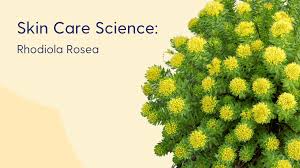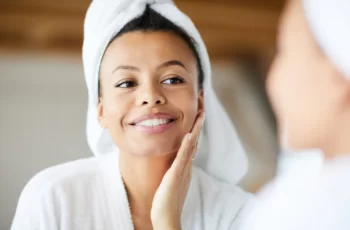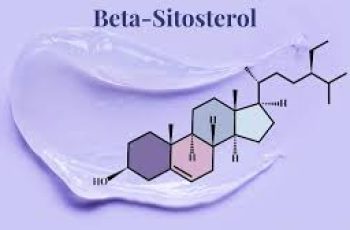
The Science of Rhodiola Rosea in Skin Care
Rhodiola rosea, also known as golden root or arctic root, is an herb commonly found in cold regions of Europe and Asia. Traditionally, it has been used in folk medicine to combat fatigue, reduce stress, and improve overall health. However, rhodiola rosea is also used as a topical ingredient in skin care products for its anti-aging and anti-inflammatory properties. Here, I explain more about what this ingredient is, what it does, and who can most benefit from adding it to their skin care regimen.
Rhodiola rosea is known for its anti-aging and anti-inflammatory properties in skin care.
It contains bioactive compounds that aid in collagen production and protection.
When used topically, this ingredient comes with few side effects – but oral use can cause dizziness and excess salivation.
What Is Rhodiola Rosea?
Rhodiola rosea is a hardy perennial herb known for thriving in harsh, cold environments such as the arctic regions of Europe and Asia. It is also referred to as “golden root” or “arctic root” because of its yellowish rhizome and its remarkable ability to survive in extreme climates. It has been used in herbal medicine for centuries, thanks to its adaptogenic properties, meaning it helps the body adapt to physical, environmental, and psychological stressors.
Most recently, rhodiola rosea has been studied for its skin benefits, especially its potential to protect the skin from oxidative stress and boost collagen production. Collagen, a key protein in the skin, is responsible for maintaining skin elasticity, firmness, and overall structure. As we age, collagen production naturally declines, leading to sagging skin, wrinkles, and loss of skin elasticity. Environmental stressors like UV radiation and pollution can also accelerate collagen breakdown.
Rhodiola rosea’s bioactive compounds – particularly its antioxidants like rosavin, salidroside, and tyrosol – work together to protect collagen fibers from oxidative damage and prevent the breakdown of existing collagen. Moreover, these compounds help to stimulate fibroblast activity, the cells responsible for synthesizing collagen.
Active Compounds in Rhodiola Rosea
Let’s take a closer look a the active compounds that give rhodiola rosea its many skin benefits:
Rosavin. Rosavin is one of the primary active compounds in rhodiola rosea, and it belongs to a class of compounds called phenylpropanoids. Phenylpropanoids are known for their antioxidant and anti-inflammatory properties, making them highly beneficial for protecting the skin from damage caused by free radicals, which can otherwise cause premature aging. Additionally, rosavin stimulates fibroblasts (the cells responsible for producing collagen), enhancing the skin’s natural ability to rebuild and repair itself.
Salidroside. Salidroside is particularly beneficial for its powerful antioxidant and anti-inflammatory properties. Salidroside is a type of glycoside, a compound that consists of a sugar molecule bound to another molecule. Glycosides are known to help stabilize and deliver active ingredients to the skin, enhancing their effectiveness. Salidroside also helps to neutralize free radicals, support cellular repair by promoting healthy cell turnover, and reduces inflammation.
Tyrosol. Tyrosol is a phenolic compound with strong antioxidant and anti-inflammatory properties. It has been studied for its role in reducing oxidative damage, protecting against cellular stress, and calming inflammation, both in the body and skin. Tyrosol also helps to regulate melanin production, improving the appearance of dark spots and uneven skin tone.
Flavonoids. Rhodiola rosea also contains a range of flavonoids, which provide additional antioxidant protection. These compounds help to improve signs of aging by supporting collagen within the skin and protecting against DNA damage caused by UV light, air pollution, and other environmental stressors.
Benefits of Rhodoila Rosea for Skin
Rhodiola rosea is best known for its ability to stimulate collagen and protect the skin from free radical damage that can otherwise contribute to signs of aging like lines, wrinkles, and sagging. However, that’s not all this ingredient can do for your skin. Here are some of its most notable benefits in skin care:
Supports collagen production. The bioactive compounds in rhodiola rosea like rosavin and salidroside stimulate the cells that make collagen and repair and replace damaged cells, helping your skin to look healthier and younger. The many antioxidants in this ingredient help to protect existing collagen from oxidative damage, preserving skin elasticity and firmness over time.
Brightens skin tone. Tyrosol found in rhodiola rosea brightens skin tone by helping to regulate the production of melanin, the pigment that gives our skin its color.
Free radical protection. Rhodiola rosea’s antioxidant compounds help to protect the skin from damaging environmental stressors like UV radiation and pollution, reducing oxidative stress that leads to aging.
Reduces redness and inflammation. The anti-inflammatory properties of salidroside and tyrosol make rhodiola rosea effective at calming redness, irritation, and inflammatory skin conditions like eczema or rosacea.
Side Effects of Rhodiola Rosea
When used topically, rhodiola rosea generally comes with few side effects and is safe for most people. However, oral use of this botanical can cause side effects such as dizziness, dry mouth, or the production of excessive saliva.
Best Skin Care Products with Rhodiola Rosea
Some of the best skin care products that contain rhodiola rosea are aimed at improving signs of skin aging and brightening areas like under the eyes. SkinMedica, for example, has an eye mask that contains this brightening ingredient to remove dark circles under the eyes and reduce inflammation.
Bottom Line: IS Rhodiola Rosea Right for Me?
Rhodiola rosea is a versatile ingredient that offers a range of benefits for many different skin types. Its ability to protect against environmental damage, calm inflammation, and aid in collagen production makes it particularly effective for those with sensitive, dry, or aging skin.
If you are still not sure if this ingredient could be right for you, take the quiz below to find your Baumann Skin Type and get a customized skin care regimen that’s a match for your skin’s unique needs.


